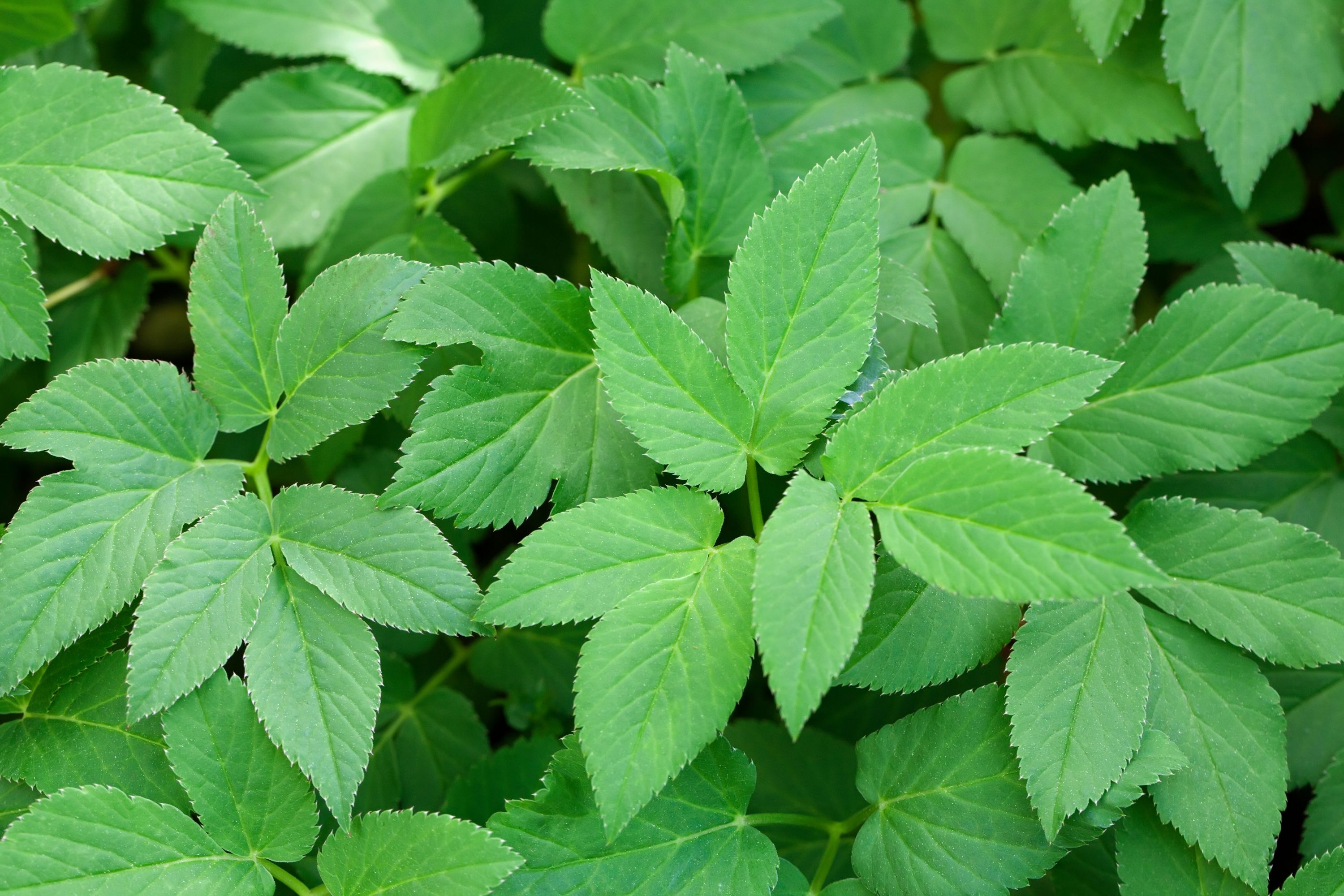Ground elder
(Aegopodium podagraria)

Description
Aegopodium podagraria, also known as bishop's weed, ground elder, or goutweed, is a perennial herbaceous plant in the carrot family (Apiaceae). This plant is native to Europe and Asia, but it has been introduced to other parts of the world, including North America, where it is considered an invasive species. Despite its invasive nature, Aegopodium podagraria has been used for medicinal and culinary purposes for centuries. In this article, we will explore the characteristics, uses, and cultivation of Aegopodium podagraria. Characteristics: Aegopodium podagraria has a rhizomatous root system that allows it to spread quickly and form dense colonies. The plant can grow up to 1 meter in height, but it typically ranges from 30-100 cm tall. The leaves are compound and have three leaflets that are ovate to heart-shaped and have toothed margins. The stems are erect and have fine hairs. The flowers are small, white, and arranged in umbels that are 2-5 cm in diameter. The fruits are small, dry, and elongated, with two seeds per fruit. Uses: Aegopodium podagraria has been used for medicinal and culinary purposes for centuries. In traditional medicine, it has been used to treat gout, arthritis, and other inflammatory conditions. The plant contains various bioactive compounds, including essential oils, flavonoids, and alkaloids, which may have anti-inflammatory, antimicrobial, and antioxidant properties. In culinary applications, Aegopodium podagraria is often used as a herb or vegetable. The young leaves and shoots can be eaten raw or cooked and have a slightly sweet, parsley-like flavor. They can be used in salads, soups, stews, and sauces. The roots can also be used in cooking and have a nutty flavor when roasted. Cultivation: Aegopodium podagraria can grow in a wide range of soils and light conditions, but it prefers moist, well-drained soils and partial shade. The plant is hardy and can tolerate temperatures as low as -25°C. Aegopodium podagraria can be propagated by seeds or division of the rhizomes. However, caution should be exercised when cultivating this plant because it can become invasive and difficult to control. To prevent the spread of Aegopodium podagraria, it is recommended to plant it in containers or raised beds, rather than directly in the ground. Regular pruning and removal of any rhizomes that escape from the planting area can also help to control its spread. Conclusion: Aegopodium podagraria is a versatile plant with medicinal and culinary uses. Its hardy nature and ability to grow in a variety of conditions make it a popular choice for gardens and landscapes. However, caution should be exercised when cultivating this plant, as it can become invasive and difficult to control. By understanding the characteristics and cultivation requirements of Aegopodium podagraria, gardeners and enthusiasts can appreciate its benefits while preventing its spread.
Taxonomic tree:







